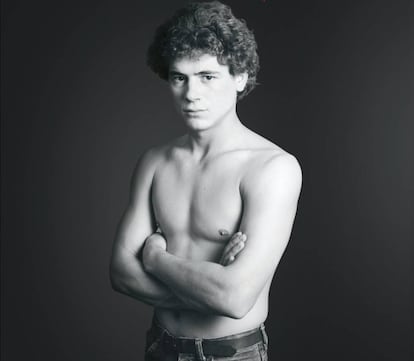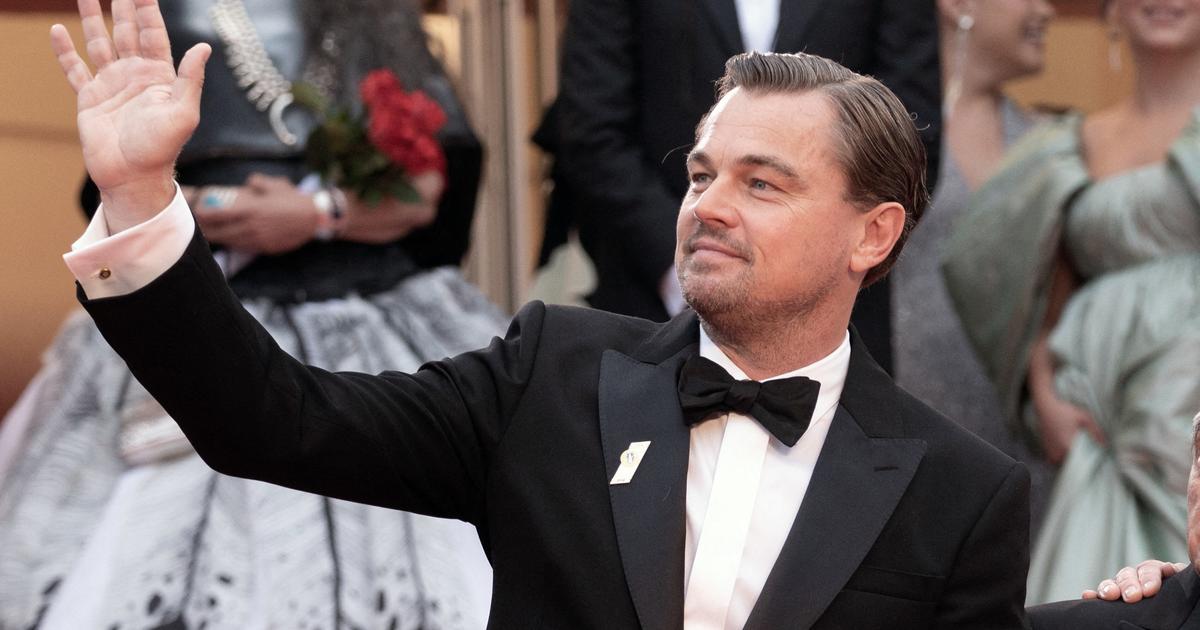"His fragility was very beautiful on camera." Summed up the director of
casting
of
Death in Venice
(1971), Margareta Krantz, the appeal of Björn Andrésen. The Swedish actor played Tadzio at age 15 in Luchino Visconti's adaptation of Thomas Mann's novel and now, at 65, he is starring in the documentary
The Most Handsome Boy in the World
, released a month ago in Spain through Filmin . The title refers to the nickname with which Visconti crowned the boy during the presentation of the film at the Cannes festival and that, months later, accompanied his face on a cover of Andy Warhol's magazine,
Interview
.
Tadzio was an ephebo or, as he is called in the gay community, a
twink
.
A "handsome young-looking man, thin and pale," according to the Cambridge dictionary.
The first records of the noun date from the early sixties, although its origin is not clear: there are those who link it with
twank
(as they call the clients of prostitutes in the United Kingdom), with
twinkling
(brand new, new) or, depending on the
Gay
Slang Dictionary
Gay-2
-
Zee
, with the Twinkie: a tender, blond, sweet, non-nutritious bun filled with cream.
In Spanish we could call them
lolitos
if we pass to the masculine what the RAE defines as
lolita:
“A seductive and provocative adolescent”.
Originally, the
twink
or
lolito was
only one in that he was observed (and desired) by a man older than him: no one would proclaim himself as such. And the connotation of the term, moreover, was explicitly sexual.
In 2018, almost five decades after proclaiming Björn Andrésen the most handsome boy in the world, the same magazine,
Interview
, wondered if Hollywood was suffering from “an invasion of
twinks
” led by Timothée Chalamet. According to journalist Trey Taylor, Leonardo DiCaprio had inherited from River Phoenix the title of "
official
twink
" of cinema and now Chalamet was "the new young and sexy actor who has captured our imagination." Chance has wanted Andrésen and Chalamet, who will premiere
Dune next
week
, to go through time and space to coincide on the Spanish billboard. What has changed in the figure of the
lolito
during these 50 years?
Image of 'The Most Beautiful Boy in the World' from the filming of 'Death in Venice' with Luchino Visconti and Björn AndrésenSundance Institute
Also in 2018,
The New York Times
published a report entitled “Welcome to the
Twink
Era
” on the occasion of the premiere of
Call Me By Your Name
and the internet obsession with Chalamet.
The article shared a premise with another by Kyle Buchanan in
Vulture
that a few months before he had reviewed the coincidence on the summer card of several young
lolitos
as action heroes: Tom Holland in
Spider-Man
, Ansel Elgort in
Baby Driver
, Dane Dehaan in
Valerian
and Harry Styles in
Dunkirk
.
The media reaction addressed the issue on all possible fronts. Philip Ellis predicted in
Men's Health
that the term, marginal gay slang for decades, would jump into mass culture after the repercussion of that report while, in another piece for
Repeller
, Ellis himself denounced that equality should not be achieved by objectifying to men as it had been doing to women for decades. Spencer Kornhaber asked in
The Atlantic
if, given that fixation with the paleness of
lolitos
, blacks could not fit into that category (Asians,
apparently
, they can receive the nickname). Dominic Cadogan criticized on
Dazed
that the
New York Times
text
he was proposing the usual: "Be gay, but straight."
Bryan O'Flynn finished off the debate in
Vice by
stating that "it has always been the era of the
lolito
": young, slim white men have been in fashion for centuries.
The first
lolito
of popular culture is Ganymede, a shepherd who, according to Greek mythology, Zeus kidnapped because he was the most beautiful of all mortals and therefore deserved the honor of living on Olympus.
Although Ganymede is not the first boy to appear in a myth, he is the first whose identity and story only exist because a mature and more powerful man has fallen in love with him: Zeus's plans for Ganymede were for him to spend eternity serving him came.
"Plato said that the myth of Ganymede had been invented in Crete because the Cretans liked youngsters," explains the art historian Carlos Delgado. In any case Ganymede represented the aesthetic obsessions of Greek culture, the first to consider athletic plenitude a divine gift. But the canon of the ephebus, as we conceive it today, is due to the German scholar Johann Winckelmann. "Winckelman is considered the creator of the history of art as a discipline," says Delgado. “In the 18th century he traveled to Rome and fell in love with the statue of Apollo at Belvedere. Winckelmann's ideas about beauty would cement a canon of young, athletic, and proportionate male beauty. And it remains until today ”.
José Luis Manzano, Eloy de la Iglesia's muse with a tragic destiny and one of the few male sex symbols who left the cinema in the late seventies.
According to the consensus of those who have analyzed the archetype, a
lolito
loses his wings when he turns 25 or becomes aware of his own nature (whichever occurs first), but that conception of the ephebus as a young man ignorant of his attractiveness provokes a relationship. of unequal power. Ganymede would not be one of them without Zeus, Bjorn Andrésen also without Visconti, in the same way that in the eighties José Luis Manzano acquired his status as a young Iberian erotic icon when Eloy de la Iglesia took him off the street at 17 and gave him the leading roles in
Navajeros
,
El pico
or
La tobacconia de Vallecas
. When the
New York Times report
tried to transfer the figure of the
lolito
to mass culture, it did so while ignoring its social, sexual, economic and class connotations.
In 1995 a Calvin Klein campaign was labeled "outrageous" by Bill Clinton and eventually banned.
The ads featured youthful-looking models being interviewed by a mature male voice in what, by all accounts, looked like a casting for an old porn movie.
"Today
twink
is a term that has to do with
marketing:
if you like a certain type of person, you click on that word and you get to that product," says Luis Venegas, editor of magazines such as
Candy
or
Electric Youth!
, the latter specialized in the cult of male and young beauty.
With the turn of the century, the Internet offered a massive consumption of pornography and, once bodies are neoliberalized, it is necessary to create categories so that the consumer can easily find the product they are looking for.
Now
twink
is also a tag for the search filter in gay dating apps.
More than sexual objects
Fashion artists reject this reductionism of the
lolito
as a mere sexual object.
In recent years, designers such as Raf Simons or Hedi Slimane have used the figure of the desirable young man as the protagonist in several campaigns.
After starring in
Ready Player One
, Tye Sheridan was the face of Prada.
In 2018 Loewe launched a capsule collection with printed photos that Wilhelm von Gloeden took in the early 20th century of the naked teenagers of Taormina.
"It is super accepted in fashion, but the other way around would be unthinkable," says photographer Pablo Zamora.
"It would not be allowed to do
challenges
like that with girls."
Does this mean that the
lolito
, originally an object of sexual desire, exists today as an aesthetic that can be stripped of eroticism?
"The concept may have a sexual origin, but it has been losing it and now it is eminently aesthetic," says Zamora. “As a homosexual man, I can identify the moment of adolescence in which a girl begins to form physically into the adult woman that she is going to be. I see it as a precious and ephemeral moment that for me is not linked to sexuality ”. Venegas agrees and quotes several artists (the designer Palomo Spain, the photographer Kito Muñoz) who capture
lolitos
in your projects.
“It was young people doing things with young people for young people.
The age gap we have very recorded but it seems to me a stereotype, it is no longer like when Calvin Klein did it at 50 years old.
The same was true a lot in the seventies and eighties, but not now.
Now it is about creating images that are exciting to behold ”, he concludes.
Leonardo DiCaprio, a "lolito" who passed on his status to become one of the biggest stars in Hollywood history, photographed in 1994. Terry McGinnis / WireImage
But as
Call Me By Your Name
began to grow in popularity, many questioned its romanticization of an adult-adolescent relationship. Although Armie Hammer was 26 and Timothée Chalamet 20, their physical and social differences (Oliver was traveling in Europe on his own, Elio was still living with his parents) drew attention to a part of the public that was not familiar with the
twink
subculture
. Is the myth of the ephebus, as Plato said, a spiritual, poetic or intellectual alibi for the desire for youngsters?
According to Enrique Aparicio, journalist and host of two
podcasts
on queer culture
(I can talk? And
Maricapáginas
), desire is crossed by social structures and that includes patriarchal ones. “Tastes do not come from nowhere, they are a response to those structures. The relationship between a wise / powerful older man and an ephebic / innocent youth is a constant in homosexual relationships. For me, it is a consequence of the need to resemble gay relationships to heterosexual ones: for the patriarchy, a couple where there is an older and more masculine boy and one who takes the
female
role is more valid
, ”
says Aparicio.
Journalist Danny Polaris wrote that the stereotypes of the
lolito
indicate that they are not only effeminate but also shy, insecure and without any notion about sex. If Michel Focault said that sexual oppression never disappears but is disguised, gay culture has insisted on treating this paradigm as its own virginal maiden. And they have used it to apply old macho vices against members of their own community.
The new conversations around the genre are contributing to the
twink
term
becoming outdated. Two singers mentioned in the
New York Times report
, Troye Sivan and Olly Alexander, have claimed femininity. In
Bloom
, Sivan sang the goodness of sexual passivity. In
Sanctify
, Alexander stated “You don't have to be straight with me, I know what's under your mask [in English,
mask
sounds like
masc,
masculine in gay slang]”. These types of subversions are leaving the term increasingly outdated and indicate its discriminatory connotation.
You can follow ICON on
,
,
, or subscribe here to the
Newsletter
.





/cloudfront-eu-central-1.images.arcpublishing.com/prisa/XRJ5S7YZJBH7DHXLTF7UYFTVBY.jpg)


/cloudfront-eu-central-1.images.arcpublishing.com/prisa/7JZPS2LJIJDO7LH33ROEDPEANM.jpg)
